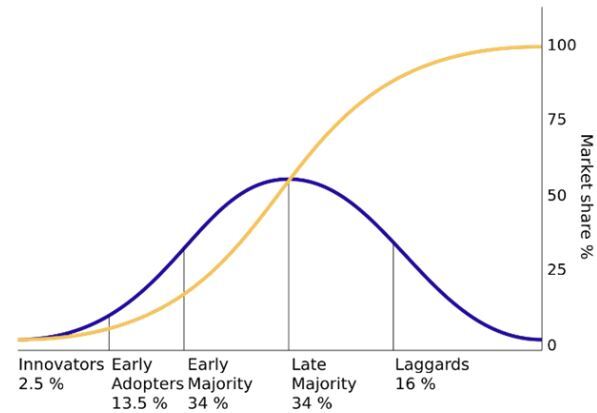Industrial Automation
Overcoming the Hurdles of Single Pair Ethernet Proliferation
02.28.2023
Although Single Pair Ethernet (SPE) has been discussed for some time now, its acceptance in the market has had some hiccups. Today, it’s quickly gaining traction as a way to supply Ethernet over a single twisted pair—instead of the two or four pairs that most other data transmission mediums rely on.
Among their many benefits, SPE cables are lighter than traditional cables, are faster and easier to install, and have excellent range and device coverage. Over the past few years, however, there’ve been a few reasons why some professionals in the industry have hesitated to consider Single Pair Ethernet. In this blog, we discuss those hurdles and explain how they’re being overcome.
The Single Pair Ethernet Ecosystem
One of the most common qualms has been about the readiness of the SPE value chain or ecosystem. For example, are chip PHY manufacturers’ products supported on IEEE 802.3da 10BASE-T1S? Which connectors should be used? Are all standards released and safe to invest in? Are there use cases in place for SPE products in different verticals?
These questions—along with many others—frame the struggles that traditional industrial companies face when deploying SPE. When there aren’t solid and easy-to-find answers to these types of questions, they become bottlenecks that slow down the adoption of SPE technology. Luckily, the industry is working together to address these questions so installers and users have clear answers and understand how to deploy Single Pair Ethernet.
Once these questions are answered, companies will have to think about the role they’ll play within the SPE ecosystem and how the technology aligns with internal core competencies.
Backward Compatibility
Scholar Carl Shapiro categorized the role of standards in his paper “The Art of Standards Wars” very well, sharing convincing historical examples like North vs. South in Railroad Gauges in the 19th century, Edison vs. Westinghouse and AC power generation and distribution and color television standards. The paper reveals strategic views and how to win customers in highly regulated industries. Beyond what has been talked about, the fundamental of standards is to drive economies of scale to benefit of end-users.
Single Pair Ethernet is a radical and disruptive technology with revolutionary, superior and compelling performance. Often, radical technology isn’t backward compatible with legacy products or technologies. To enjoy the full performance and benefits of new technology, old assets must often be replaced with updated equipment.
Incremental development, on the other hand, typically offers the advantage of backward compatibility. This is important, especially when established system environments and value chain compatibility are already in place for existing technology; however, education is important.
Supporting backward compatibility also offers a lower relative unit cost by keeping the same or better performance. Recent examples in the computer industry include the transition from USB 2.0 to USB 3.0 or PCIe 3.0 to PCIe 4.0.
Easy migration paths for SPE technology have been attempted. For example, IEC 63171-2 and IEC 63171-5 standards map out compatibility of four-chamber connectors with existing four-pair wiring systems and RJ45 interfaces. but they were rejected by the Single Pair Ethernet System Alliance. Existing legacy M12 A-coded connectors were proposed for use as SPE connectors; in the process industry. Customers have also showed an interest in reusing existing PROFINET cables for SPE. This can be done, but only in certain situations. It depends on the installation.
There are lower psychological and financial barriers involved with accepting and adopting new and better-performing products. In these examples, there is a clear and simple migration path that paves the way for users to convince stakeholders about the benefits and update outdated assets slowly over time, lowering the operational risks of adoption. Historically, SPE has seemed to require high stakes in order to enjoy full benefits—but that is improving.
The Risk of Investment
When dealing with new technology, well-established companies struggle to balance the weight of investment.
Not participating in disruptive innovation like SPE seems like a relatively safe decision; however, you run the risk of losing a competitive edge and falling behind in the market. Kodak and Nokia are two well-known examples of companies that opted not to invest in disruptive technologies and are obsolete as a result.
We also see examples of companies that invest in new technology and still do not succeed. The key to success depends on two things:
- When you choose to join the party and which role you play (innovator, early adopter, early majority, etc.)
- The readiness of the technology ecosystem
Based on market research, the global connector market size was estimated at $62.7 billion at the end of 2021. Corresponding SPE connector types make up around 2% of this total revenue ($1.25 billion). The law of diffusion theory tells us that the innovator market size (2.5%) of $1.25 billion would mean roughly $30 million of revenue from all players in the ecosystem in total, and the earlier adopters (13.5%) would generate about $170 million to reach the market tipping point.
Law of Innovation Diffusion

Adapted from Diffusion of Innovation, Wikipedia
We can easily work backward to calculate how many passive SPE connectivity products need to be sold before the ecosystem is considered mature. Although it’s just beginning, the shift will continue to accelerate.
Who the earliest adopters will be and when the industry tipping point will arrive become the fundamental questions that every traditional company must answer to determine when the transition is right for them.
The Pandemic
The global pandemic also temporarily impacted the growth of the SPE ecosystem. Ecosystem growth depends on interaction and collaboration between different firms at each step of the chain.
Virtual ad-hoc meetings and cancellations of events and exhibitions had an essential impact on the SPE ecosystem despite the ease of capital.
The Actions of Manufacturers
Finally, transitioning from multi-pair Ethernet to SPE requires all players to act. For example, as device manufacturers continue to adopt and integrate new SPE technology, hardware and software for next-generation SPE products will be developed. Manufacturers of end devices need to build new PCB hardware to integrate new ICs to modulate signals. Connector companies need to agree on new standards to maximize compatibility.
The actions these manufacturers are taking now will allow integrators and machine builders to create solutions for appropriate applications within different verticals to bring value to asset owners and operators.
Belden is doing its part to bring Single Pair Ethernet to market so organizations can benefit from what it has to offer.
Our Single Pair Ethernet portfolio of cabling and connectivity products is designed to optimize Ethernet connection possibilities in harsh environments, including industrial and transportation operations.
These systems come together to create the foundation for real-time communication between all devices on the network, the enterprise backbone and the cloud to improve process efficiency and reduce operational costs.
As Industry 4.0 evolves, and the number of sensors and actuators connected to the factory backbone grows, Single Pair Ethernet is a simple solution to further industrial automation.
Related Links
Single Pair Ethernet for Industrial Applications
Single-Pair Ethernet Consortium: Bringing Single-Pair Ethernet to Building Automation
